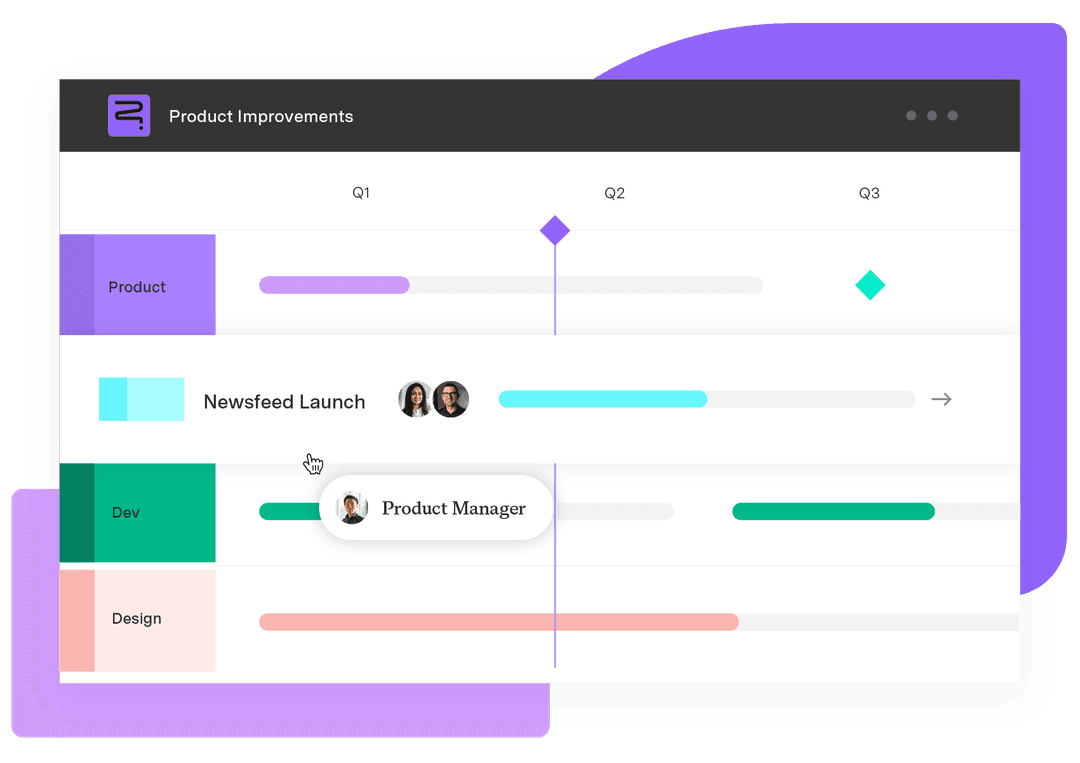Prepare your team for every roadblock with scenario planning
Tempo Team
Nothing beats the comfort preparation offers.
What-ifs are only scary when you’re not sure how to handle them. But if you have an ideal action plan and a couple of backups, you can rest easy knowing you’ve done your due diligence in arming yourself and your team for these scarier situations.
Scenario planning does just that. It offers employees the comfort and support they require to effectively handle stressful scenarios.
What’s scenario planning?
Scenario planning involves managers working with their teams to prepare responses to probable future scenarios like security threats and staffing shortages. They’ll identify uncertainties and possible realities and work with their team to create action plans for handling these situations.
This forward-thinking preparation can occur at every organizational level, from company owners preparing for a recession to product development leaders figuring out how to reduce the risk of data theft. You might even implement scenario planning as a necessary project risk management stage for every initiative.
But no matter your position or the severity of situations you’re considering, scenario planning always fulfills the following objectives:
Find ways to maintain focus during roadblocks
Prepare the team to mitigate risk register threats
Improve everyone’s problem-solving skills
Increase overall efficiency by offering teams a tried-and-true guide for handling challenges
Put external stakeholders at ease by showcasing that the team has considered various possible outcomes
Comfort employees by providing a guide for handling stressful situations
Scenario planning versus forecasting
Both scenario planning and business forecasting use quantitative data to predict plausible future situations, but the former also considers qualitative information like employee perspectives and market trends. In this way, forecasting is a more rigid projection based on past numbers, and scenario planning is more nuanced, also considering how employees might react in a given situation and whether there’s been talk of an industry downturn even if the numbers don’t suggest it.
Because forecasting is more numbers-based while scenario planning is more hypothetical, you also gain increasingly diverse perspectives when conducting the latter. Employees are encouraged to voice their opinions on how a future situation might go down, and this diversity in thinking and expertise means you can create more comprehensive and thoughtful action plans for handling these scenarios.
Why is scenario planning important?
The most widely enjoyed benefit of preparing for various hypotheticals is peace of mind, as everyone can rest assured you’ve planned for possible stressful scenarios. Here are a few more benefits of conducting scenario planning:
Risk preparation:
You can use these sessions to identify the earliest signs of potential risks and determine how to mitigate or remove these issues before they gain traction. And while the intention is to avoid these scenarios, you’ll also create a plan for handling full-blown emergencies to reduce stress and increase team efficiency.
More innovative thinking:
Often, you’ll bring employees from various hierarchical levels and diverse backgrounds together to ensure you consider every angle. This increases the likelihood you’ll gain more innovative solutions than if you’d created a mitigation plan on your own. Plus, you can use these sessions to encourage employees to think outside the box and challenge the status quo regarding how other companies have handled similar scenarios.
Crucial documentation:
You’ll typically take notes during these sessions and create official risk management plans, all of which are essential documentation when external stakeholders ask about your plan for certain situations. And if managers are ever unavailable when a planned-for scenario hits, employees have valuable documents to refer to.
Various types of scenario planning
Even though the specifics of your team’s scenario planning depend on your work, all scenarios typically fall into one of these categories:
Quantitative scenarios:
Much like forecasting, this involves tweaking past data to consider how this change affects future outcomes. A finance team, for example, might look at how an investment loss affects the company’s yearly ROI to adjust accordingly.
Event-based scenarios:
This is the most common type and involves considerations of how a given event or circumstance could affect a company’s operations. While teams might use some quantitative data to determine consequences, they’ll also brainstorm possibilities and gain feedback from teammates and other stakeholders.
Normative scenarios:
These are more idealistic hypotheticals regarding how a company or team wants to function. A management team might consider several leadership styles to determine the best one for their organization, or a marketing team could work out ideal practices for communicating with clients in various high-stress situations.
How to conduct scenario planning in five steps
Preparing for every scenario is impossible, but this five-step guide helps you anticipate and create action plans for some of the most probable outcomes. Work with everyone involved as much as possible to ensure you gain a well-rounded picture of these possibilities and how to handle them.
1. Start with a question
This is one of the only situations where playing the What-If game pays off. Decide which hypothetical you’d like to plan for, perhaps listing several and choosing the scenario with the most dire and current potential consequences.
Here are a few high and low-level examples to help you brainstorm:
What if the client doesn’t re-sign for another quarter?
What if the site goes offline for 24 hours?
What if we don’t meet our yearly company-wide budget?
What if our investors pull out?
2. Acquire quantitative and quantitative information
Delegating the work and perhaps teaming up with outside data acquisition and analysis professionals, consider all plausible internal and external factors regarding your hypothetical. If you decided to determine what you’ll do if an investor pulls out, for example, you might think through the following aspects:
Which employees would this affect?
How likely is this to happen?
How would this affect operations?
How would this influence the team and/or company’s success in the short and long term?
Does this possible future affect any external stakeholders?
To structure this analysis, you could conduct a PEST analysis, considering how political, economic, social, and technological factors affect how your team responds in this situation.
Once you’ve accumulated and reviewed your research, choose 2–3 ideal futures — the resolutions you’d like to reach if this what-If occurs. Number these from most fortunate to least fortunate to better understand how to begin your action plan (more on this in step four).
3. Identify early indicators
Catching threats early is crucial to effectively mitigating a situation before it worsens. List out a few of the most glaring and likely indicators that your hypothetical is occurring. You’ll use these as triggers for actioning your plan.
4. Create action plans
Tell a story for each possible future, perhaps using a flowchart and if-then structure to clearly define the ideal process your team will execute. You might create a separate plan for each of your 2–3 ideal outcomes or work them into the same document, starting with your preferred outcome and offering contingency plans if employees must try a different strategy.
5. Review the original plan
If the scenario arises, host a retrospective post-situation to gain employee feedback on the original action plan and where reality didn’t align with expectations. Document any differences and adjust the original plan to assist future teams.
Scenario planning best practices
You’re nearly ready to take on anything the future has in store for your team. Follow these best practices to conduct robust and useful strategic planning:
Be realistic:
To give your team the chance to effectively handle a stressful situation, ground your game plan in reality. Consider the resources — be it employees, funds, or technologies — you already have at the ready, not being too idealistic about what you’ll have in the future. This realism sets your team up for success.
Leverage data:
Make more informed decisions by basing your scenarios on a foundation of reliable data. This helps you accurately reflect the existing business and industry landscape, enhancing the accuracy and credibility of your action plans.
Create backup steps:
For every if-then step in your plan, consider what an employee or team should do if this next step doesn’t pan out. Doing so fosters resilience and ensures employees feel well-prepared for every outcome.
Use a template:
Consider turning the above five-step guide into a simple template the leadership team can use to standardize your scenario planning. Doing so also ensures employees cover crucial components like internal and external factors and early indicators.
Prepare your team for anything with Tempo’s tools
Aside from a scenario planning template, you can support the strategic planning process with Tempo’s suite of project management tools. Use Strategic Roadmaps to craft strategic roadmaps that visualize how your team will get from point A (scenario trigger) to point B (your ideal future). Then, try Timesheets by Tempo to gain more data on how long factors like task and action plan execution take to create better mitigation strategies in the future.














































